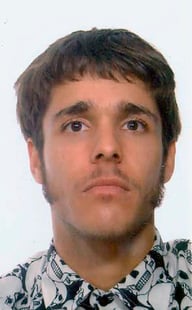

ANIMAFEST SCANNER IX | SYMPOSIUM FOR CONTEMPORARY ANIMATION STUDIES | PANEL 2 THE STATE OF CONTEMPORARY EUROPEAN ANIMATION AND ITS FUTURE
Traditional Animation in the Digital Era - Pablo Nicolás Martínez Ballarín (Doctoral student, Complutense University of Madrid, Spain)
PANEL 2 THE STATE OF CONTEMPORARY EUROPEAN ANIMATION AND ITS FUTURE
TEATAR &TD
08/06 WED 11:20-11:50
What is the future of traditional animation in today’s era? When I studied Fine Arts, we often had the discussion about the limits of art. Soon we stopped trying to decide whether something is art or not, and we focused more in what is better and what is worse. Years later, already out of the world of Fine Arts and inside the world of Animation, I have been thinking about similar comparisons. As before I was wondering if painting was more “fine” art than pottery, now I wonder if some animations are more artistic than others. What can make the difference between animated films in their level of artistry? Even though there would be many different angles to take this under consideration, mine is: digital technologies. I enrolled in doctoral studies in Madrid with the idea of comparing two European countries, Spain and Estonia, which stand for their animations in such extreme ways: Spain has a big industry of special effects and computer-generated animations, whereas Estonia still shines in film festivals all over the world because of films made on paper or with puppets. For my two-part investigation I first want to collect the reasons that push animators to use traditional techniques to make their films, instead of computer. In the second part I want to analyse why animators and spectators might think, if they do at all, that traditional animation is more artistic than computer animation.
Pablo Nicolás Martínez Ballarín was born in Huesca, Spain in 1991, but raised in Madrid. There he finished Fine Arts and then moved to Estonia to study animation in 2017. So far, he has had a happy life. He is about 1.64 m tall, more or less like Napoleon. Brown eyed. Nothing exotic. He studied English, French, Polish and currently Estonian and Catalonian. Also Arab, but it was just a summer course in 2016. His films include Photon Season (2015), In Between the Walls of Perception (2018), The Russian Troops (2019). He was animator for Laura Benavides’ Displaced (2019), The Piece of Tail in the Mouth of the Snake that Bites Its Own Tail (2019) and In My Chest of Fire There Is Still Place to Temple Your Dagger: A Love Story (2021).


